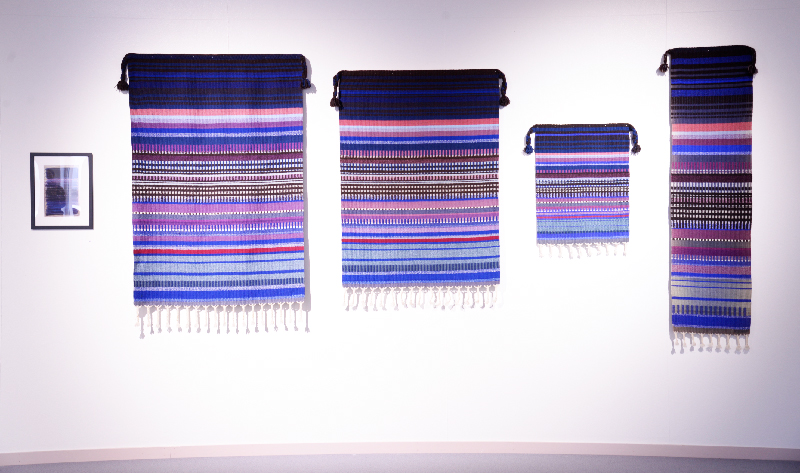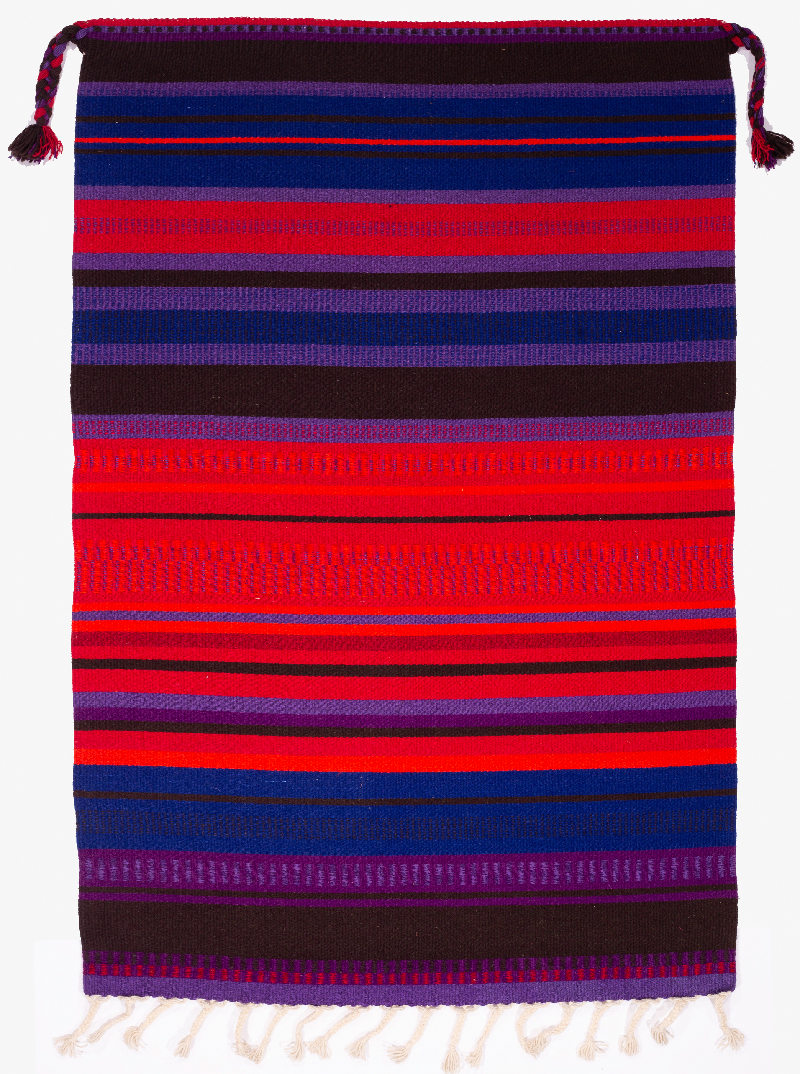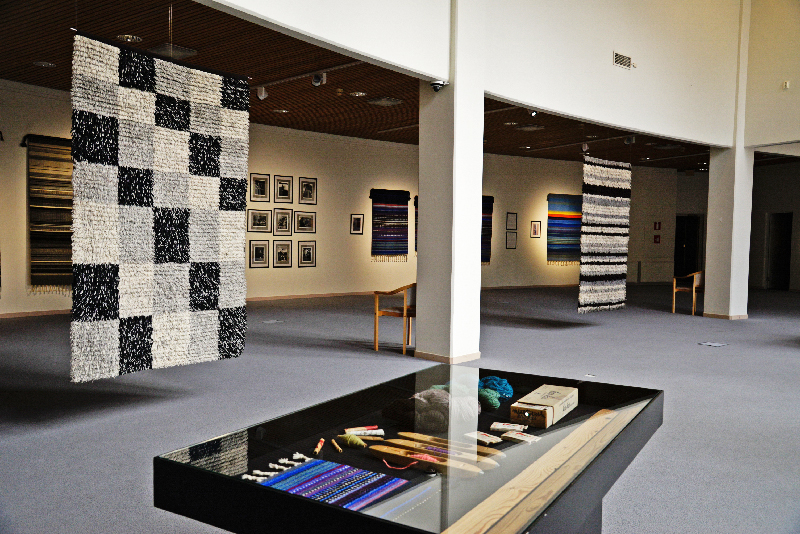
Elsa Montell-Saanio, Weaver from Lapland
When I studied weaving in Finland, in 1968/ 69 there was a strong tendency at my weaving institution, Fredrika Wetterhoffin Opettajaopisto( Fredrika Wetterhoff Teachers Seminar, in short called „Wetterhoff“) in Hämeenlinna to look at folk art weaving. Students were asked to get samples of the weavings in their area and bring them to the school in order to study the colours and the way they were woven. Than the next task was to search for a new way of using this design principle for interior textiles or fashion. Many of the textile artists in Finland I came to know, were using this connection with the past. In combination with a love for nature and an almost Japanese love of simplicity this was leading to wonderful textiles! For me as a weaving student it was an nearly ideal situation to have the beautiful Finnish nature as the base of creating and the old techniques as practical learning principles.
It was during this time that I came to know about the weaver artist Elsa Montell-Saanio (1926 – 2019) from Lapland, who had renewed a technique called „raanu“, a woolen textile decorated typically by colourful stripes, following a symmetrical pattern. Studying the different ways of raanu weaving in the North of Finland Elsa Montell-Saanio found her medium. The signature attributes of of her raanus were all woolen textiles with plaited tassels in the top corners whereas the bottom is finished with a row of little plaits. These details are showing that a raanu has a beginning and an end, it is not made or sold by the meter.
After graduating from the Central School for Industrial Arts in Helsinki, Elsa and her husband photographer Matti Saanio, moved to Oikarainen, in the municipality of Rovaniemi, to live in her former homestead. In 1955 Elsa Montell-Saanio established the Lapin Raanu Weaving Studio employing local weavers and creating award winning artworks and interior textiles. Her designs renewed the tradition of raanu weaving in Finland, beyond her Studio in Lapland. She is especially known for her use of colour, she dyed yarn samples and developed a signature colour gradient weaving technique to realise her ideas, often based on the landscape of Lapland. Based on the artists sketches and detailed instructions the skilled weavers in her studio produced beautiful raanu textiles over three decades.
Raanu textiles of Elsa Montell-Saanio were gaining unforseen popularity during the 1960s and 1970s in Finland. She received international fame at the XI triennial of Milan in 1957, the Brussels World Expo in 1958 and at the Sacramento International Textile Exhibition in California. The Lapin Raanu Weaving Studio ans rhe gallery building, Raanupirtti became popular tourist attractions around Rovaniemi. Thousands of tourists as well as many notable visitors were brought there yearly.
Traditional raanu textiles in Lapland were first mentioned in the 16th century and the oldest remaing rugs are from the 18thcentury. They have been woven all over Finland. Its weft-faced ribbed surface is woven in plain weave using a relatively spaced-out warp of cotton, linen or wool and a dense weft of single-ply woolen yarn, beaten tightly. In Lapland weaving was for centuries focused mainly on raanu textiles. In Finnish Lapland there are three different types of traditional raanus: from the Sámi region of the Northern part of Lapland the all-woolen Lappish raanu – woven in a prehistoric technique on a vertical loom and from Southern Lapland the symetrically striped Rear Bothnian raanu as well as the Halve-piled rug combining raanu with rya technique.
Raanu yarn was traditionall homespun from own sheep and dyed with natural dyes from local mushrooms and plants. In Rear Bothnia also imported natural dyes like madder and indigo were used from the early 19th century. Synthetic dyes changed the esthetics of textiles since the early 20th century making the art of dyeing with natural dyes nearly forgotten but the interest in natural dyeing hat a come-back at least in the 1960s as „Wetterhoff“ had an excellent natural dye teacher, where I still value the samples I made so long ago!
Traditionally raanu textiles were used either as a blanket in a sleigh or bed, as curtains or walls in a nomadic dwelling and even as sails. Old raanus were carefully mended and patched as they had to last for several generations. From the 20th century industrial blankets and machine-made rugs replaced the raanu as a functional interior textile. Since than, raanus were hung on the wall as decoration and have been preserved in better condition.
Elsas husband, photographer Matti Saanio (1925 – 2006) documented the life in the North and every day work at the Lapin Raanu Weaving Studio. He became well-known as photographer of Lapland with reportages in Finnish magazines and newspapers. He often exhibited his photographs together with Elsas textiles. His darkroom was situated in the basement of the Lapin Raanu Weaving Studio next to his wife’s dye studio.
Elsas work began when she arrived in the Studio with a new design. The sketch could be from a very small note made while traveling, or a more elaborate large-scale painting or drawing. Together the artist and weavers produced the first samples of the new design, tested colour combinations and rhythms of stripes. When Elsa Montell-Saanio was pleased with the sample, she prepared detailed weaving instructions, so the weavers could produce the textiles independently.
Dyeing was an important part of the production. For each new raanu design new yarn samples were dyed, a task that Elsa did herself in the basement of the weaving studio. In the beginning natural dyes from plants and mushrooms were used, but soon synthetic dyes replaced them in production.
One example of product development is scaling the raanu in different sizes. In the early years Lapin Raanu Weaving Studio was focused on large-format raanus, used as blankets or wall hangings in homes or public spaces. But the raanu also was a suitable gift for example to state guests or wedded couples. Mass tourism in Lapland brought larger groups of people by buses. They had no space to bring home larger textiles. The so-called tourist raanu, much smaller in size was created during the 1970s. To change the scale of the artwork required reducing the design, reweaving samples and recreating the weaving instructions.
As Elsa Montell-Saanios weavings became very popular in the 1960s and 70s, her strong colours and asymmetrical compositions were widely copied by amateurs and professionals. Most of them lacked the skills and facilities for dyeing and were limited to the colour palettes of ready-dyed yarn. Elsa worried that her wish to renew folk art was misunderstood. That is why she returned in her last collection to the symmetrical stripes of traditional Rear Bothnian raanus. She wanted to guide young artists to the source of folk tradition – not to copy but to take inspiration from the quality and esthetics of old textiles.
There has been a retrospective exhibition in 2022 called“ Elsa Montell Taidekutomo Lapin Raanu – Lapin Raanu Weaving Studio“ at Gallery Valo in Rovaniemi organised by the University of Lapland. The information in this article was based on the catalogue (ISBN 978-952—337-343-3) of this exhibition. Furthermore I found several raanu weavings of Elsa at different auctions on the internet for sale at surprising low prices but be aware that real ones must have a label telling the title of the work and the name Elsa Montell-Saanio, Lapin Raanu Weaving Studio.
Beatrijs Sterk, Hannover 27.9.2024
PS This article was planned to also be published in Selvedge magazine.
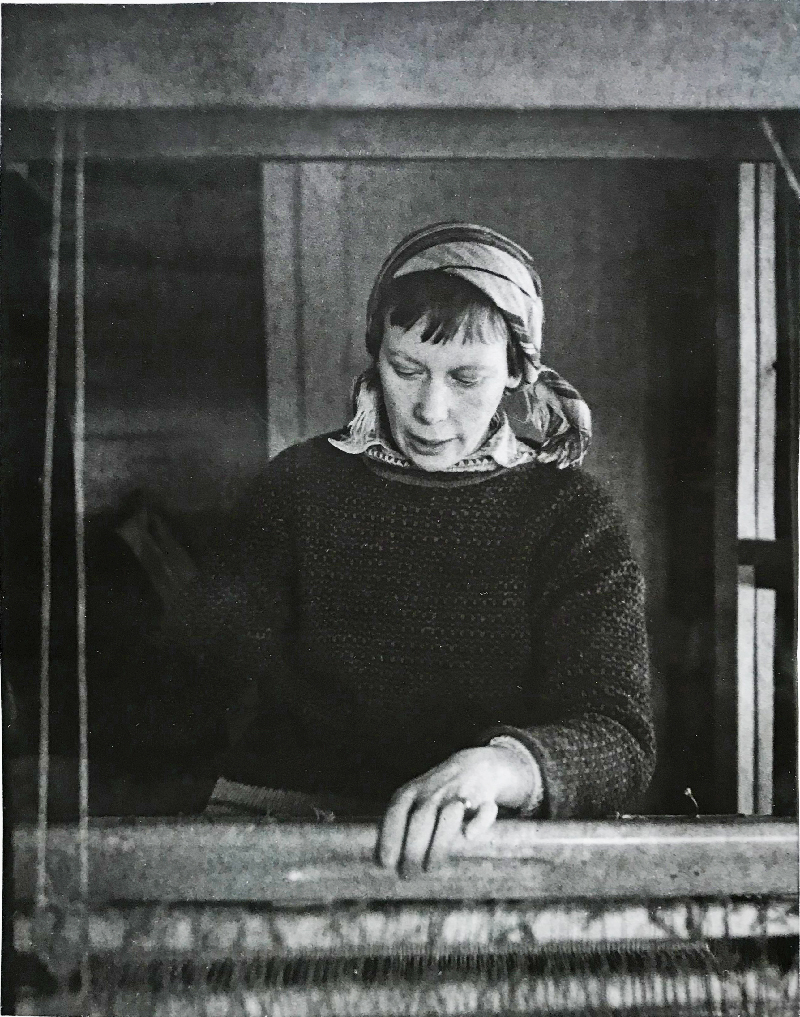
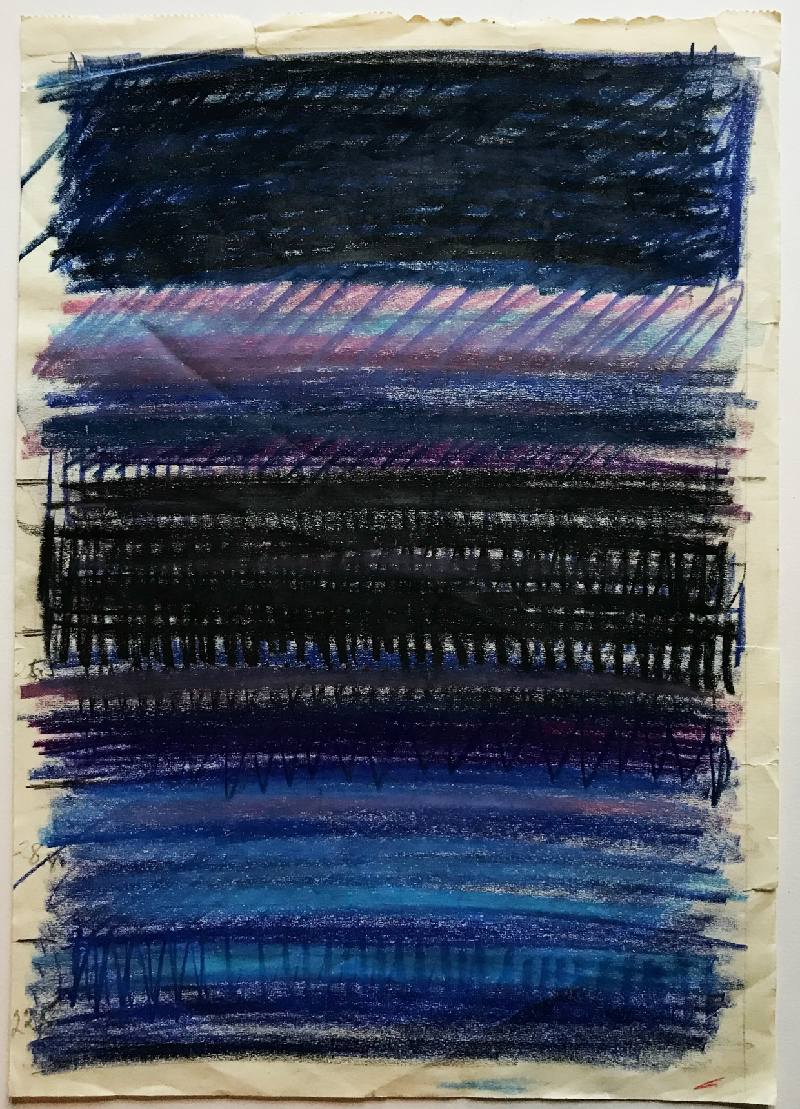
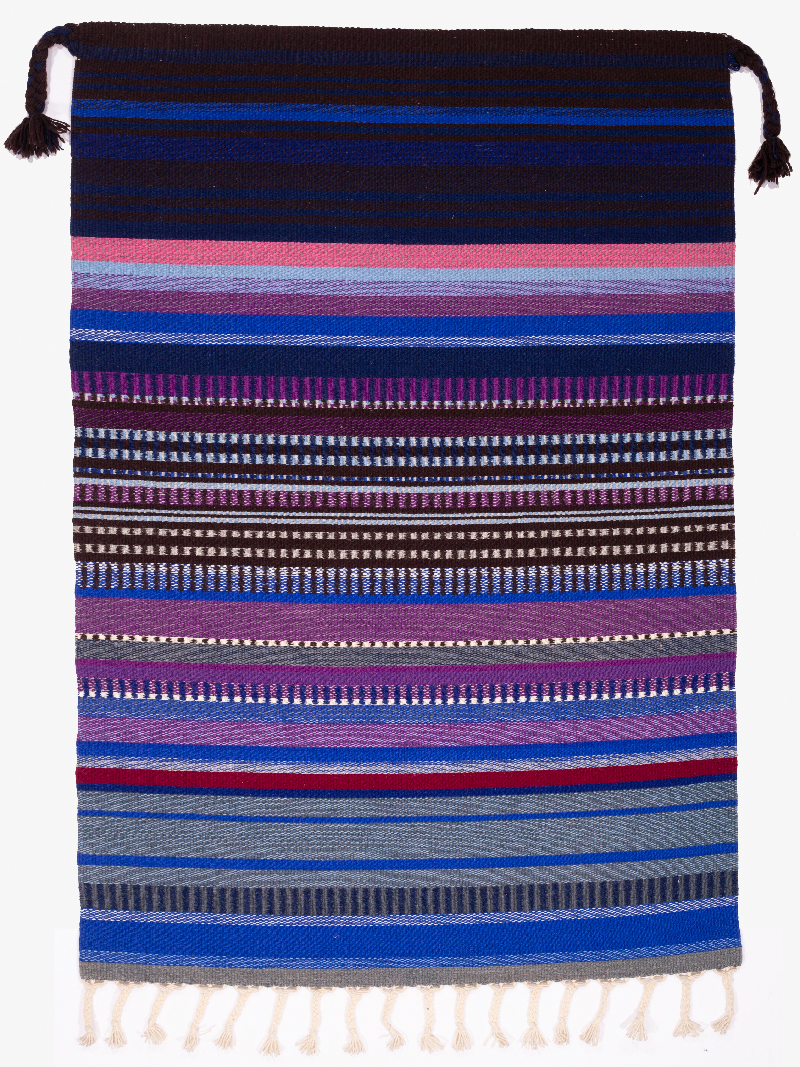
woven at Elsa Montell-Saanio´s „Lapin Raanu Weaving Studio“;photo Supertrampmedia
